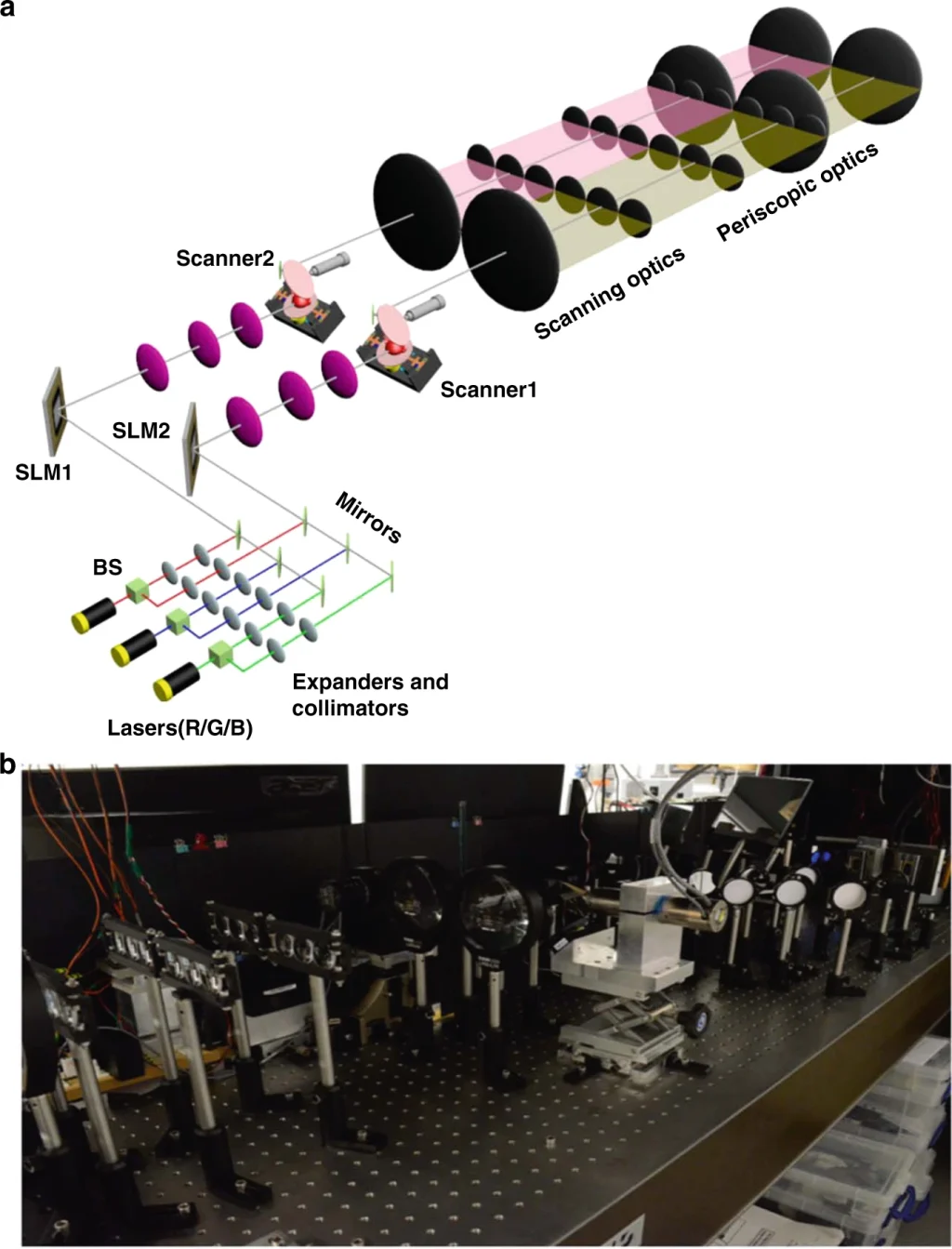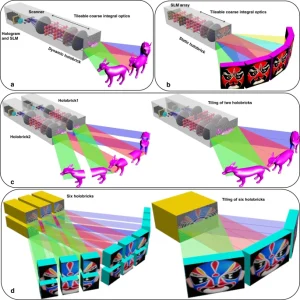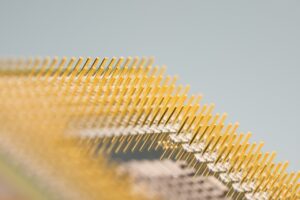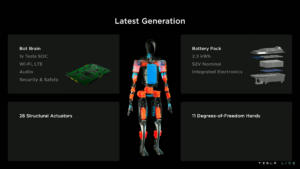
Cambridge (UK) Holograms are a technology that has been expected for a long time, but has so far been rather disappointing. A research team from Disney and the University of Cambridge has now developed a technique with which holographic images and videos can also be produced on a large scale. This is made possible by so-called “holobricks” – modular optical devices whose partial projections can be combined to form a seamless image. In the future, holo displays the size of a cinema screen, composed of many smaller holobrick modules, are conceivable.
In science fiction films, holograms have been standard for many decades. Even in reality there are already some technologies that produce holographic videos or free-floating projections. So far, however, all these projections are quite small.
The reason for the scaling problem is the huge amount of data that is needed for a hologram. The larger the hologram viewing angle and area, the finer and higher resolution the holographic interference pattern needs to be. An HD display requires a data rate of around three gigabits per second for a two-dimensional image. With a hologram of the same resolution and size, it would be around three terabits per second, which is far more than is currently possible with current technology.
The holobricks could offer a solution to the problem, because each of these optical modules only has to generate a section of the image, so the resolution of the common hologram generators is sufficient for this. This technology could not only enable holographic movies, even video games could be played with holograms, which would change the gaming experience completely.
 “A holobrick is a self-contained CIH module enclosing a spatial light modulator (SLM), a scanner, and periscopic coarse integral optics. Modular CIH uses a coarse pitch and small area but high-bandwidth SLM in conjunction with periscopic coarse integral optics to form the angularly tiled 3D holograms with large viewing areas and fields of view.”, the researchers explain in their paper (doi: 10.1038/s41377-022-00752-7).
“A holobrick is a self-contained CIH module enclosing a spatial light modulator (SLM), a scanner, and periscopic coarse integral optics. Modular CIH uses a coarse pitch and small area but high-bandwidth SLM in conjunction with periscopic coarse integral optics to form the angularly tiled 3D holograms with large viewing areas and fields of view.”, the researchers explain in their paper (doi: 10.1038/s41377-022-00752-7).
First, the researchers developed a so-called “proof of concept”, which proves the feasibility of the project. This consists of two seamlessly tiled holobricks with a size of 1024×768 pixels. The field of view measures 40 degrees and 24 frames per second. Thus, the tiled holograms could display full 3D images.
“Over the past decade, we have been working with our industry partners to develop holographic displays that make it possible to simultaneously realize a large format and a large field of view, which must be accompanied by a hologram with a high optical information content,” says Chu, Professor at the Cambridge Department of Engineering.
The project is particularly challenging because the final 3D image must appear seamless from all angles and depths, Chu explains. A direct tiling of 3D images in real space is not simply possible.
The new technology is based on roughly integrated holographic displays for angular 3D images. The University of Cambridge’s Center for Advanced Photonics and Electronics developed the concept seven years ago together with Disney Research.
The holobricks are still prototypes, but the experiments give hope that holographic films could be made for a large audience with the help of this technology. However, a lot of research work is still necessary before it is ready for series production, as according to the research team there are still a few problems to be solved.






